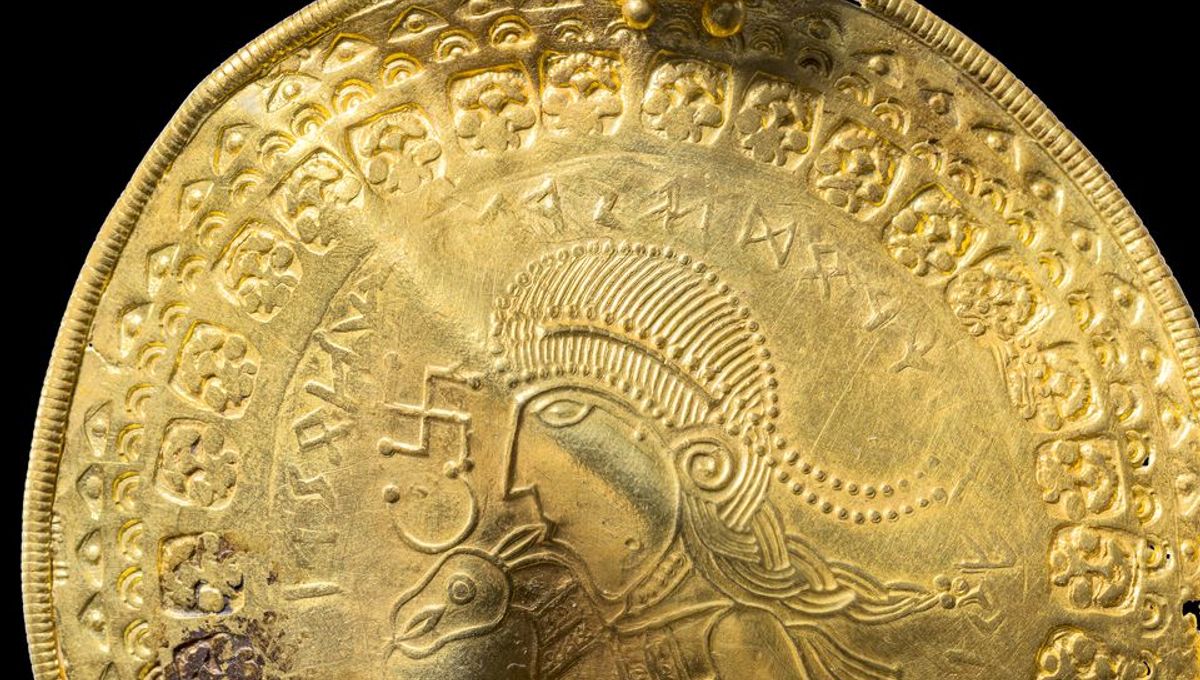
Researchers have discovered the earliest known runic inscription referencing the Norse god Odin, resident of the heavenly realm of Asgard and overseer of Valhalla. Etched into the surface of an ornamental gold disk, the engraving predates the next oldest mention of Odin’s name by around 150 years.
The thin gold ornament – or bracteate – was found amongst a trove of ancient treasure that has come to be known as the Vindelev Hoard since its discovery in the central Jutland region of Denmark in 2020. Thought to have been buried around 1,500 years ago, the stash is significantly older than the previous oldest reference to Odin, which appears on a brooch that has been dated to the latter part of the sixth century.
After a long struggle to interpret the ancient letters – or runes – engraved into the bracteate, researchers finally deciphered the phrase “he is Odin’s man” in relation to a portrait of a figure who may have been called “Jaga” or “Jagaz”. With no other written sources available from fifth-century Denmark, runologists are unsure exactly who this person was, although the name is likely to refer to a king or overlord whose divine right to rule came directly from Odin.
“The runic inscription was the most difficult I have ever had to interpret in all my years as a runologist,” said Lisbeth Imer from the National Museum of Denmark in a statement. “It is the first time in the history of the world that Odin’s name was mentioned. This means that Norse mythology can now be dated all the way back to the early 5th century.”
The difficulty in deciphering the inscription owed to the fact that many of the runes had faded, while the text itself was written without spaces between the words and in a somewhat archaic style. “Not only has the structure of the language developed tremendously since the 5th century, but many words have also fallen out of use,” says ancient language specialist Krister Vasshus.
“Generally, we find short runic inscriptions with fairly comprehensible content, but this time the text is long and consists almost entirely of new words. That made it extremely difficult to interpret.”
According to Vasshus, the successful translation of the text may help researchers decipher other ancient runic inscriptions. For instance, more than 200 engraved bracteates have been found in Northern Europe, yet the vast majority of these have so far proved too difficult to interpret.
Odin is among the most famous Nordic deities, and is associated with war, death, and wisdom. The father of Thor and Baldr, Odin was believed to preside over Valhalla, the heavenly hall where half of all slain warriors spent their eternal days.
The other half were thought to travel to Fólkvangr, which was the domain of the goddess Freyja.
Source Link: Oldest Reference To Norse God Odin Found On 5th-Century Gold Disk